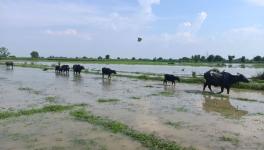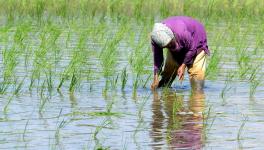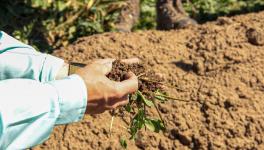More Than 1.7 million Indians die Annually due to Diseases Attributable to Unhealthy Diets: Report
Representational use only.
Patna/Delhi: Despite the Central government's increasing food grain output and stock records, more than 1.7 million Indians die due to diseases attributable to unhealthy diets. The diet of an Indian, on average, lacks fruits, vegetables, legumes, nuts and whole grains, as revealed by the State of India's Environment 2022 report.
"More than 1.7 million Indians die every year due to diseases that can be attributed to dietary risk factors and weight levels," said the latest report released by the Centre for Science and Environment and Down To Earth magazine online on Thursday to mark the approaching World Environment Day.
Sunita Narain, editor, Down To Earth, in reference to the importance of figures, said, "Data is about measurement. The better we measure, the better we will get at management -- this is what we know, which is why we put together this dataset each year. It helps us make sense of the changes we see in our world; it helps us understand what needs to be done".
The report lists diseases like respiratory ailments, diabetes, cancer, strokes and coronary heart disease. Dietary composition refers to diets low in fruits, vegetables, whole grains and diets high in processed meat, red meat, and sugary drinks; the weight levels refer to whether an individual is underweight, overweight or obese.
"About 42% of the world's population cannot afford a healthy diet – the figure is a huge 71% for India. It suggests that the diet of an average Indian does not contain enough fruits, vegetables, legumes, nuts and whole grains," the report said.
According to the report, food systems and practices impact the environment. While milk production is responsible for the lion's share of greenhouse gas emissions and land use, grains account for the biggest share of freshwater use, nitrogen and phosphorous applications.
"Despite some progress, diets are not getting healthier. Additionally, they are making increasing demands on the environment, even as unacceptable levels of malnutrition persist in the country. The high human, environmental and economic costs of continuing our current trajectory are so significant that we will pay a far higher price if we fail to act. The global food system falls far short of achieving global goals for both health and the environment."
The report also presents an analysis of food prices. The consumer food price index (CFPI) inflation has seen a 327% increase in the past year, while the consumer price index (CPI) – which includes CFPI -- has seen an 84% jump.
"Food seems to be the biggest mover of CPI inflation. The current high levels of food inflation have been driven by the rising cost of production, surging international crop prices and extreme weather-related disruptions. In fact, our analysis of CRISIL data shows that food prices have increased at a higher rate in rural areas than in urban areas in March-April 2022," said Richard Mahapatra, managing editor, Down To Earth.
Mahapatra said data re-generates debates and discussions.
"This year marks a milestone both for India and the planet. India is celebrating its 75th year of Independence, and we have a promise of a 'New India' with quantified development goals to meet. This year also marks the 50th anniversary of the Stockholm conference, the UN's first meeting on the human environment. This report tries to do justice to both: by making an assessment of whether the promised 'New India' will come to pass (in the case of the former). And by documenting and analysing (in the case of the latter) how the planet's environment has been in the last 50 years."
"Most of the data that the report carries is based on official government statistics that are available in the public domain. We simply analyse it and present it with a researcher's rigour and a journalist's insight," he said.
The report highlighted that while the cost of cultivation has increased in India by almost 35% between 2012-13 and 2018-19, the share of the income from cultivation in an agricultural household has gone down from 48% in 2012-13 to 37% in 2018-19. At the same time, 50% of agricultural households in the country are reeling under debt. On average, every household has a debt burden of over Rs 74,000, and about 29 farmers and farm labourers die by suicide daily.
Get the latest reports & analysis with people's perspective on Protests, movements & deep analytical videos, discussions of the current affairs in your Telegram app. Subscribe to NewsClick's Telegram channel & get Real-Time updates on stories, as they get published on our website.
























